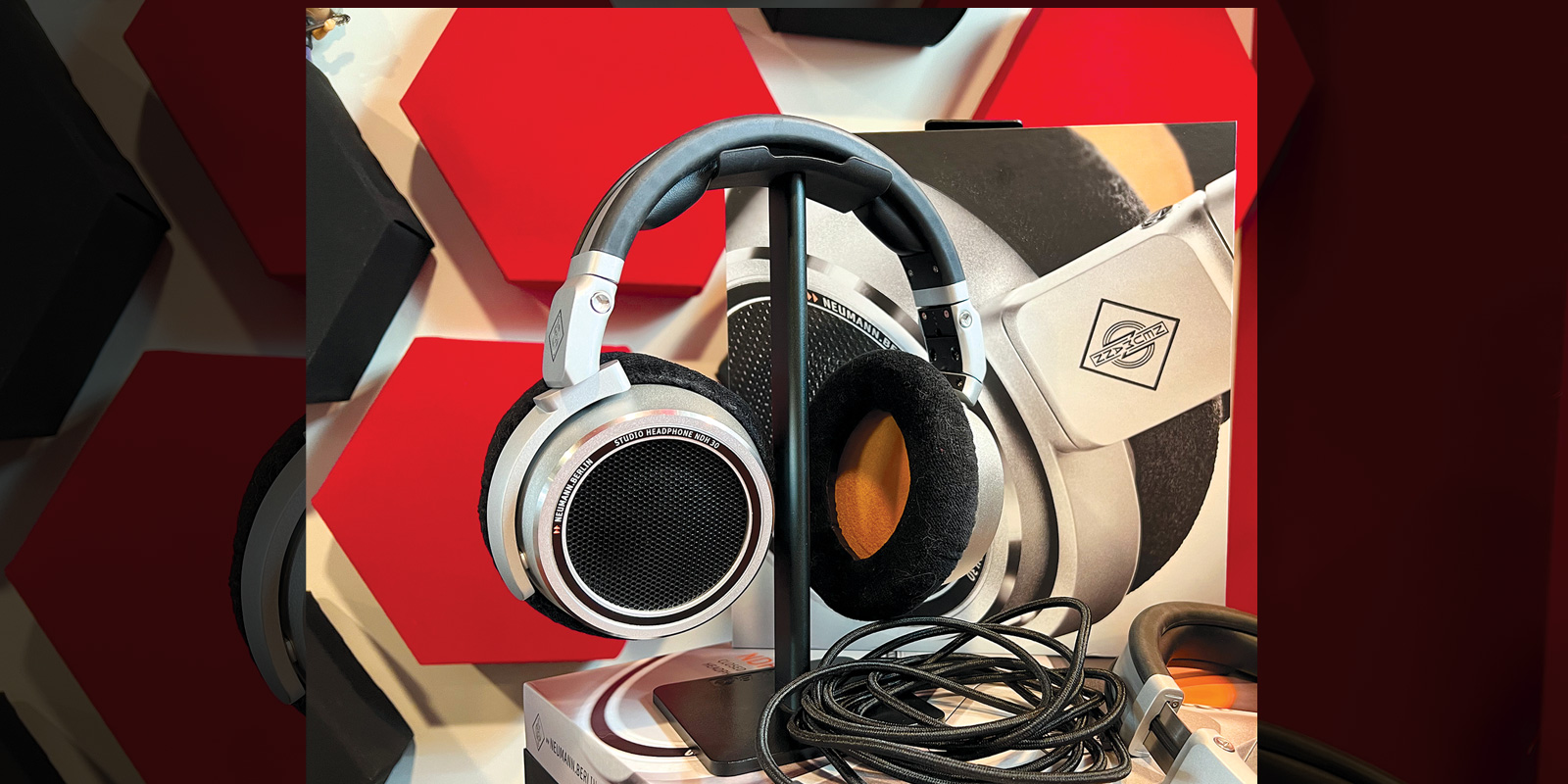Unapologetically studio-focused, open-back headphones
Review by Paul Vnuk Jr.
In our September 2019 issue, we introduced our readers to the NDH 20, the first Neumann headphone. They were “an impressive debut,” and our reviewer was “curious to see where Neumann takes its new headphone line in the future.” The wait is over… introducing the Neumann NDH 30.
Building on a Strong Foundation
Identical to the first-born Neumann headphone, the NDH 30 is primarily made of metal with minimal plastic accents. Its steel headband and aluminum ear cups sport a finish similar to the company‘s microphones.
The 4″ memory foam ear cups swivel 90º, allowing the headphones to lay flat for transport and storage. The NDH 30 comes in a foam-lined display box with a cloth pouch and a 9.8′ fabric-wrapped locking cable with a 1/8” to 1/4” adaptor that attaches to the right-side ear cup. Note the NDH 20 offered a second coiled cable option.
Past Featured Reviews
- April 2024: Ableton Live 12
- March 2024: JZ Microphones BT202
- February 2024: JH Audio Pearl + Ruby
- February 2024: Antares Vocal Reverb by Auto-Tune
- January 2024: Ableton Push 3
- December 2023: KIT Plugins BB A5
- Focal Twin6 ST6
- Earthworks SR117 & SR3117
- November 2023: AEA TRP3 and RPQ3
- October 2023: AudioScape 260VU Compressor/Limiter
- September 2023: Sound Devices MixPre-6 II
- August 2023: Soundtoys SuperPlate
Let‘s Be Open
Where the NDH 20 is a closed-back model, the new NDH 30 is its open-back sibling. As such, the black covering of the ear cup on the NDH 30 is vented versus a sold silver end cap. Also, the foam ear cup on the NDH 30 is a fuzzy-velour-like material compared to its predecessor‘s tight velvet feel.
Both models are circumaural (surround the ear) designs featuring 38mm Duofol drivers and high-strength neodymium magnets offering a high sensitivity and a smooth frequency response. Of course, there are some notable differences in each model‘s overall specs and performance.
The NDH 30 has a 12 Hz to 34 kHz frequency response, 120Ω impedance and a 104dB SPL sensitivity (1 kHz/1V RMS) compared to the 5 Hz–30 kHz, 150Ω, 114dB SPL NDH 20. The .77 lb NDH 30 is also a tad lighter than its .86 lb predecessor.
While the NDH 20 was designed to offer 34dB (above 4 kHz) of isolation (for tracking and such), as an open-back design isolation is not really a thing with the NDH 30. Still, despite being an open-back headphone, the leakage is less than many other open-back models in my collection.
At 120Ω, the NDH 30 is a fairly high impedance headphone and performs best when driven by a robust headphone amp. However, it had no issues with entry-level audio interfaces, mixers and keyboards. In each case, the signal was solid without an audible breakup or sounding like the headphones were working too hard.
Style and Comfort
Objectively speaking, the NDH models are on the large and beefy side. The big circular ear cups give off a vintage broadcast booth/1970s home hi-fi appearance. Subjectively, I appreciate their classic elegant familial appearance and all-metal build. I also find them balanced and very comfortable for hours-long listening sessions. I also like how the cups surround but don‘t touch the ears.
The NDH 30 is a bit less “clampy“ feeling, and I prefer the fuzzy ear cups compared to the NDH 20.
Sound
In the NDH 20 review, we were reminded that most studio-style headphones tend to be hyped to offer enhanced “clarity.” In contrast, the NDH 20 focused on smoothness and balance, similar to “listening to unhyped studio monitors.” Similarly, the NDH 30 is voiced to be even, neutral and smooth. While I would not call them flat, they are devoid of hype. The magic of the NDH 30 lies in its mid-range translation.
I was constantly impressed by the lush representation of mid-focused sources—all with zero low-end smearing or top-end harshness. While the NDH 30 exhibits a delicate hint of warmth, the lows and highs are still nicely represented, just not pushed or excited. It is worth noting that the NDH 30 is not as airy and „not there,“ as some other open-back headphones.
Where the NDH 20 has a balanced, pillowy, focused tonality, the NDH 30 is more relaxed with a tad more dimension—like the NDH 20 let out a gentle sigh. Similar to the NDH 20, the NDH 30 is an excellent mixing headphone. If I overcook the lows or highs on them, I know I have pushed them too far. Conversely, on many “hyped“ studio cans, I tend to undermix those same elements, and the NDH 30 is also a huge help in that realm.
Where the NDH 20 lives in my world solely as a favorite tracking and mixing tool, the NDH 30 are also pleasant to just listen to music.
Wrap Up
Neumann had already crafted a headphone worthy of its legacy. The NDH 30 is another excellent entry that offers users a gently more open, natural-sounding option while retaining what made the previous model a studio-focused success.
Price: $649
More from: neumann.com


